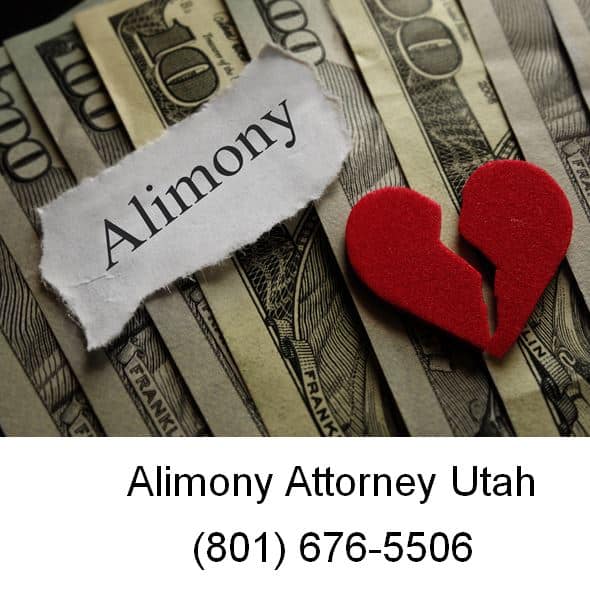
Alimony (also called aliment (Scotland), maintenance (England, Ireland, Northern Ireland, Wales, and Canada), spousal support (U.S., Canada) and spouse maintenance (Australia)) is a legal obligation on a person to provide financial support to their spouse before or after marital separation or divorce.
History Of Alimony
The Code of Hammurabi (1754 BC) declares that a man must provide sustenance to a woman who has borne him children, so that she can raise them:
137. If a man wish to separate from a woman who has borne him children, or from his wife who has borne him children: then he shall give that wife her dowry, and a part of the usufruct of field, garden, and property, so that she can rear her children. When she has brought up her children, a portion of all that is given to the children, equal as that of one son, shall be given to her. She may then marry the man of her heart. Obligation arises from the divorce law or family law of each country. Alimony is also discussed in the Code of Justinian.
The modern concept of alimony is derived from English ecclesiastical courts that awarded alimony in cases of separation and divorce. Alimony pendent lite was given until the divorce decree, based on the husband’s duty to support the wife during a marriage that still continued. Post-divorce or permanent alimony was also based on the notion that the marriage continued, as ecclesiastical courts could only award a divorce a Mensa ET thoron, similar to a legal separation today. As divorce did not end the marriage, the husband’s duty to support his wife remained intact.
Liberalization of divorce laws occurred in the 19th century, but divorce was only possible in cases of marital misconduct. As a result, the requirement to pay alimony became linked to the concept of fault in the divorce. Alimony to wives was paid because it was assumed that the marriage, and the wife’s right to support, would have continued but for the misbehavior of the husband. Ending alimony on divorce would have permitted a guilty husband to profit from his own misconduct. In contrast, if the wife committed the misconduct, she was considered to have forfeited any claim to ongoing support. However, during the period, parties could rarely afford alimony, and so it was rarely awarded by courts.
As husbands’ incomes increased, and with it the possibility of paying alimony, the awarding of alimony increased, generally because a wife could show a need for ongoing financial support, and the husband had the ability to pay. No-fault divorce led to changes in alimony. Whereas spousal support was considered a right under the fault-based system, it became conditional under the no-fault approach According to the American Bar Association, marital fault is a “factor” in awarding alimony in 25 states and the District of Columbia.
Permanent alimony began to fall out of favor, as it prevented former spouses from beginning new lives, though in some states (e.g., Massachusetts, Mississippi, and Tennessee), permanent alimony awards continued, but with some limitations. Alimony moved beyond support to permitting the more dependent spouse to become financially independent or to have the same standard of living as during the marriage or common law marriage, though this was not possible in most cases.
In the 1970s, the United States Supreme Court ruled against gender bias in alimony awards and, according to the U.S. Census Bureau, the percentage of alimony recipients who are male rose from 2.4% in 2001 to 3.6% in 2006. In states like Massachusetts and Louisiana, the salaries of new spouses may be used in determining the alimony paid to the previous partners. Most recently, in several high-profile divorces, women such as Britney Spears, Victoria Principal, and Jessica Simpson have paid multimillion-dollar settlements in lieu of alimony to ex-husbands. According to divorce lawyers, aggressive pursuit of spousal support by men is becoming more common, as the stigma associated with asking for alimony fades.
How long do you have to be married to get ailmony to Be Married to Get Alimony in Utah?
Alimony is one of the most discussed topics when people come in for their Roadmap and Recovery Sessions (i.e., new client consultations). And with good reason: it’s really important.
Alimony will affect how you and your soon-to-be ex will live for the next who-knows-how-many years.
It can be a lifeline for a spouse that has stayed at home and raised children. Conversely, it can be a serious burden to a spouse already paying child support.
Alimony is really a function of two things: (1) time and (2) need.
It’s about (1) that I want to spend a minute.
Time in the Marriage
Time in the marriage is the first consideration when discussion alimony. The reason for this is simple: if you haven’t been married long enough to warrant alimony, then figuring out need for alimony and ability to pay won’t matter.
My rule of thumb regarding how long you have to be married to get alimony in Utah is this:
(1) If your marriage is less than four years, it will be very difficult to obtain alimony.
(2) If your marriage is four or five years, it’s a toss-up.
(3) If your marriage is more than five years, it’s likely to end up with an alimony award.
The reason it’s difficult to obtain alimony if you’ve been married fewer than four years is because people (usually) can easily go back to work and live a normal single life on an average wage. The length of the marriage is so short that neither spouse has become dependent on a marital lifestyle.
No Hard-And-Fast Rules
Now, these are not hard-and-fast rules.
For example, if you’re married a year, become permanently disabled in an auto accident, and your spouse files for divorce that same year, your chances of getting alimony are probably pretty good.
Conversely, if you have been married for twenty years, make $200,000 per year, and have no need of alimony from your spouse to maintain your lifestyle, you don’t have a very good argument for alimony.
What I’m getting at is alimony is very fact dependent and fluid. You really need to sit down with an attorney and go over your particular situation to see where you stand regarding alimony.
Factors Considered for Payment of Alimony
Once the court settles the spouses’ property rights, it will consider a request for alimony. Generally, the court looks to the standard of living enjoyed at the time of separation to determine appropriate alimony, but it can also look at the situation at the time of trial if there has been a significant change in resources since the time of separation – the loss of a job, for example. If your marriage was short and there are no children, the court could use the standard of living at the beginning of marriage instead.
If a spouse is unable to meet the appropriate standard of living without help from the other spouse, then the court looks to a series of factors to determine the amount and duration of alimony. It evaluates the recipient spouse’s financial resources, needs, and earning capacity, as well as the payer spouse’s ability to pay. The court is not required to order an advantaged spouse to pay support if so doing means that the paying spouse won’t be able to be self-supporting. Likewise, the court can’t make the payer spouse pay more than what the recipient spouse needs to meet the marital standard of living, no matter how much money the paying spouse might be able to pay.
Other factors that the judge may consider are the length of the marriage, what the child custody arrangement is, and whether the payer spouse’s earning capacity increased because the recipient spouse contributed to education or training during marriage. If the marriage was long and one spouse is at the threshold of a major change in income because of the collective efforts of both spouses during the marriage, that change also will be a factor in the alimony award. The court has considerable discretion in awarding alimony and may look at the spouses’ relative fault in causing the marriage to fail as well.
Income Equalization Method
The court does not have to use a set formula – plugging in the spouses’ incomes and child-support obligation, among other elements – to come up with a payment amount. It can, however, order alimony based on an income-equalization calculation where neither spouse earns enough to be self-supporting nor also cover the other spouse’s needs.
For example, let’s say wife worked part-time during marriage, earning a net income (meaning, after taxes) of $800 a month and husband earned a net income of $2,600 a month. The court would attempt to equalize the incomes by adding them together for a sum of $3,400 and then dividing it by 2, for a quotient of $1,700. Then, the court would subtract wife’s net income ($800) from $1,700, leaving an alimony payment to wife of $900.
Taxes
If you are paying alimony, your payments are tax deductible. If you are receiving alimony, the IRS taxes what you receive as income.
Duration and Termination of Payments
In Utah, alimony payments usually last only as long as the number of years the marriage existed. The court could order them for a shorter or longer time, however, if the right circumstances exist. Also, payments automatically terminate when the recipient spouse remarries or wen either spouse dies. Where the recipient spouse doesn’t remarry but moves in with a new partner, the payer spouse can ask the court to terminate alimony obligations.
On the other hand, if the payer spouse remarries, there are some situations where the court could change the amount of alimony due based on the income of the payer’s subsequent spouse. For example, if a husband worked as a contractor and has an affair with an orthopedist that affects his marriage, the court could first order husband to pay his wife, a homemaker, alimony based on his resources as a contractor. Later, if he marries the orthopedist, the court could increase his payments to his first wife based on the second wife’s income because the orthopedist can contribute more to his household expenses and because there was an element of improper conduct (his affair).
Who is Eligible for Alimony in Utah and how is Alimony Determined?
While most people tend to think of alimony as something that husbands pay to wives, any spouse who otherwise meets the criteria can receive an award of alimony. What are those criteria?
As a general rule, the court takes into account the parties’ standard of living at the time they separated. The goal of alimony is to allow the parties to maintain their pre-separation standard of living. Also, according to Utah law, the duration of alimony cannot (absent exceptional circumstances) exceed the length of the marriage. Married for five years? Don’t expect ten years of alimony; it won’t happen.
There are factors the court must consider in deciding whether to award alimony (and how much, for how long), and other factors it may choose to take into account. According to statute, the court shall consider:
• the financial condition and needs of the spouse requesting alimony (the “recipient spouse”);
• the recipient spouse’s earning capacity, taking into account how time spent caring for a child of the payer may have affected that capacity;
• the ability of the payer spouse to provide support;
• the length of the marriage;
• whether the recipient spouse has custody of a minor child who needs support;
• whether the recipient spouse worked in a business that was owned or operated by the payer; and
• Whether the recipient paid for or enabled the payer to receive education during the marriage which directly contributed to an increase in the payer’s skills.
The court may also take fault into account when determining an alimony award. Fault includes:
• adultery;
• deliberately harming or trying to harm the other spouse or minor children;
• deliberately causing the other spouse or minor children to fear life-threatening harm; or
• Substantially undermining the other spouse’s or minor children’s financial stability in some way.
Remember, though, that the court does not use alimony as punishment (however much you might think your spouse deserves it!), so expect the focus to be on need and ability to pay.
As mentioned above, the court tries to allow the parties to maintain the standard of living they enjoyed just before they separated. In a very short term marriage with no children, the court might simply try to place the parties back in the positions they were in at the time of the marriage.
The court tries to allow the parties to maintain the standard of living they enjoyed just before they separated. If there is not enough money, the court may try to equalize the shortfall; the recipient may not get as much alimony as he or she hoped for, and the payer may have to write a bigger alimony check than he or she would like.
Alimony Attorney in Utah Free Consultation
When you need an alimony attorney in Utah, please call Ascent Law LLC at (801) 676-5506 for your Free Consultation. We want to help you.
8833 S. Redwood Road, Suite C
West Jordan, Utah
84088 United States
Telephone: (801) 676-5506
Recent Posts
Why You Need A Prenuptial Agreement
from Michael Anderson https://www.ascentlawfirm.com/how-many-years-do-you-have-to-be-married-to-get-alimony/
from
https://grum193.wordpress.com/2019/11/01/how-many-years-do-you-have-to-be-married-to-get-alimony/





